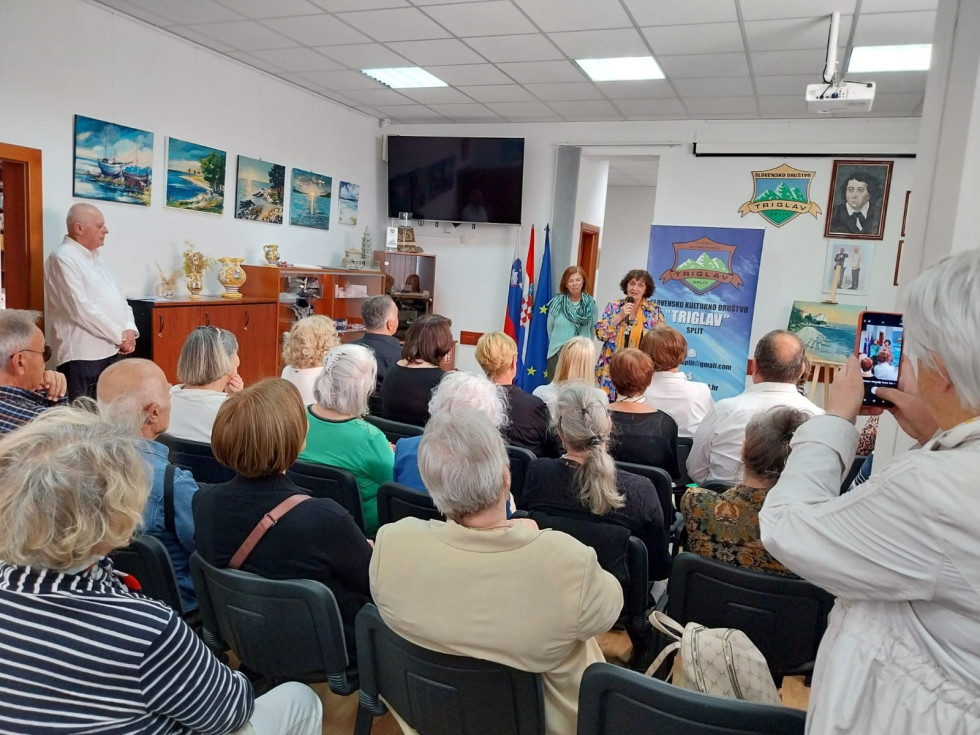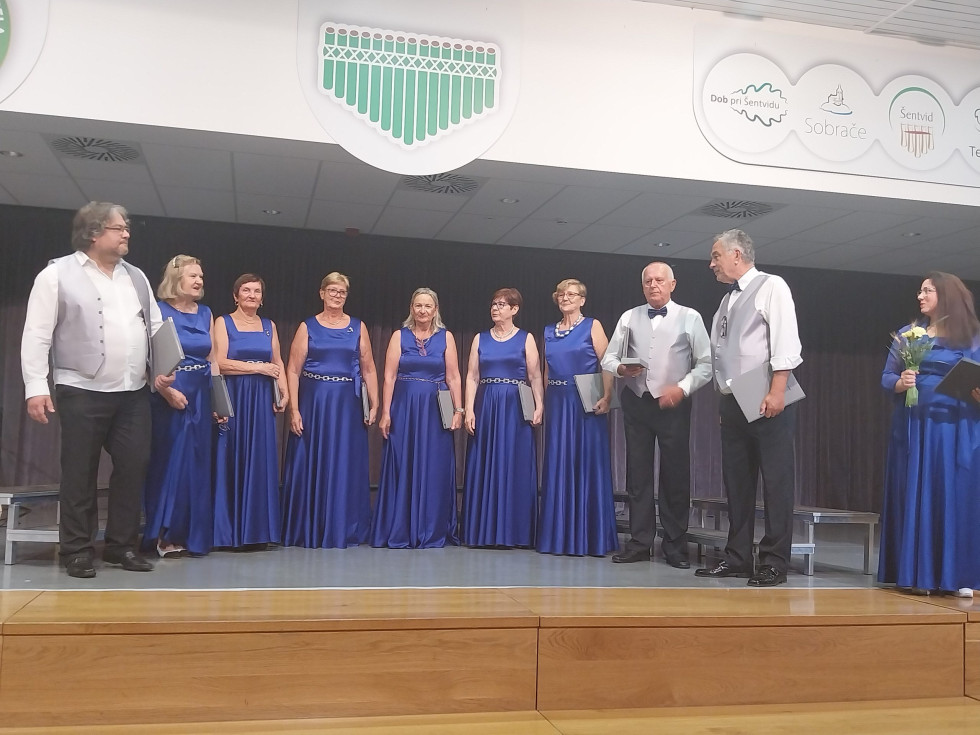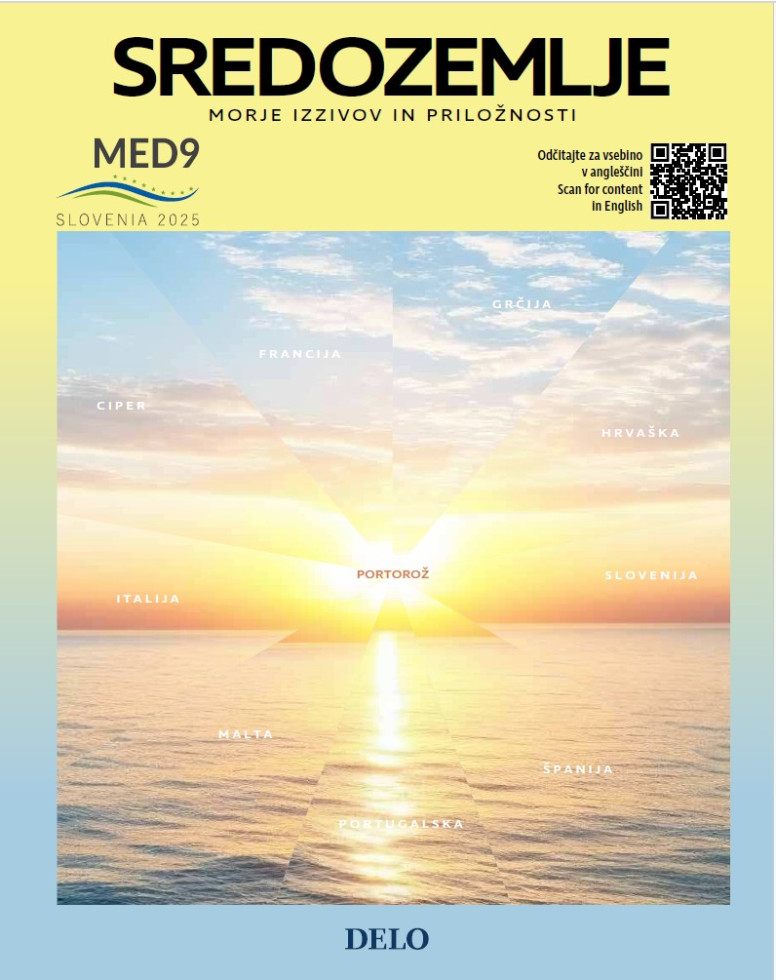Split resounds with the songs sung by the Triglav Association
On the other hand, the historical link at all levels and the familiarity between the two countries and their people are not reflected in the fact that more and more Slovenians live and work in a neighbouring Member State of the European Union. In 1991, there were 22,376 Slovenians living in Croatia, today there are 10,500. "There are 196 Slovenians living in the city of Split, and in the Split-Dalmatia County there are 410 people constituting the Slovenian minority in that area," are the current data provided by Cveto Šušmelj, who became president of the Triglav Split Slovenian Cultural Association after his retirement in 2010.
The son of an officer lands in Dalmatia
The interviewee was born in 1948 in Kokrica near Kranj, where his mother Francka, née Arnež, came from, and his father Cvetko came from the area of Nova Gorica. "We left Slovenia early in my childhood, my father was an officer in the navy, so that we moved a number of times. We lived in Lovran, Pula, Šibenik, and finally settled in Split in 1976.
My entire education took place in Croatia, I graduated from the Faculty of Law in Split, where I also a took a Master's degree in law. My last employment was that of a legal adviser at OTP Bank," says Šušmelj, who is still active as court interpreter.
He met his wife Any during his studies. She came from Slavonia to study in Split. Thus, the family put down roots in the town at the foot of the Marjan, and even after the dissolution of Yugoslavia there was no dilemma about whether they should stay in Split. "That was never really an issue. We have always felt like at home there and this has not changed even after the creation of a new state. We have never had any problems related to nationalism or politics, neither with our family nor with our association," explains Cveto, who lives in the attractive Bačvice neighbourhood, which is not far, just a few hundred metres away from the popular beach of the same name or the old town with the central market and the famous waterfront.
Slovenians living in the new independent state of Croatia quickly reacted to the new situation and became even more organised. The Slovenian Cultural Association Triglav Split was founded on 9 May 1992. "At the beginning, the association had 350 members. The Association was established in order to preserve and nurture the identity of Slovenians in the Republic of Croatia, taking care of their culture and language, and to maintain and develop the traditionally good friendly relations with the Republic of Croatia. We used to organise classes of the Slovenian language for 25 years, but unfortunately, this ended with the death of the teacher and due to the lack of students. The association is active in Split and throughout Croatia as well as in its home country. Its mixed choir has participated in the choir competition Primorska Sings and at the Camp of Slovenian choirs in Šentvid near Stična for the last 27 years. We have established contacts with more than 80 choirs. The association's lacemaking section carries on the lacemaking tradition and takes part every year in lacemaking festivals in Idrija, Lepoglava and Pag. The association also has a ceramic modelling section and publishes Planika magazine twice a year" went on our interviewee, who is an enthusiastic accordionist, singer and mountaineer.
Slovenians are mountaineers and singers wherever they go
There are also quite a few mountain enthusiasts among the association's members who visit one of the peaks in Slovenia every year, starting with the Triglav in 1992. At home in Croatia, they most frequently climb the Mosor, a rocky massif that extends north of Split all the way to Omiš. Its highest peak is Veliki Kabal (1,339 metres).
"Active members of our sections also include people native of Croatia or, more precisely, Split. There are 17 minority associations in our city, we are well connected, and we organise a meeting every year. There are a total of 17 Slovenian societies in Croatia, with which we maintain close contacts, and our umbrella organisation is headquartered in Zagreb. This year we will meet in Gorski Kotar, for which occasion we are preparing a programme with choirs and exhibitions," Šušmelj mentions to confirm the existence of various events and links among the Slovenians in Croatia.
There are only 196 Slovenians living in Split, and 410 in the Split-Dalmatia County now. For this reason, we only have one representative in the city authorities and one in the Split-Dalmatia County.
And what is the attitude of state institutions towards the Slovenian minority? "We can only be grateful to the state for its attitude and goodwill. The status of Slovenians in Croatia is defined by the Minorities Act, and we are treated and represented accordingly. Based on the 2025 call for proposals, Slovenians in Split received EUR 27,000 from the Republic of Slovenia, EUR 37,000 from the Republic of Croatia, EUR 15,000 from the Municipality of Split, and EUR 5,000 from the Split-Dalmatia County. Croatia allocates considerable funding to national minorities. This allows us to cover material costs and carry out cultural and other activities in the Slovenian language," explains Šušmelj. "There are only 196 Slovenians living in Split, and 410 in the Split-Dalmatia County. For this reason, we only have one representative in the city authorities and one in those of the county."
Split is becoming increasingly more expensive due to tourism
Split has long been merely a transit town for tourists travelling to the Dalmatian islands or towards Makarska and Dubrovnik. In this century, the metropolis of Dalmatia has become a very popular tourist destination, with a boom of visitors flocking from all over the world, which has lead to a major transformation of Croatia's second largest city, which has a population of over 160,000.
"We are really experiencing a strong growth in tourism, which has made life in Split much more expensive. Rents and other costs of living have increased significantly, making it more difficult for young people in particular to plan their long-term residence and families. The city is choked with traffic, there are many traffic jams in the summer, and public transport is overcrowded. A lot more will need to be invested in spatial planning and associated infrastructure in order to improve the quality of life. It is true that the development of tourism brings a lot of money and investment into the country, but it has other negative effects in addition to crowds in summer. At the peak of the season, three large cruise ships arrived at the port per week, and the airport recorded 150 arrivals and departures per day, all of which brought complex challenges for the development of the city at all levels", says Cveto Šušmelj.
Because of the large crowds and increasingly severe heat in the summer he recommends visiting Dalmatia in May, June, September and October, when the weather is pleasant, perfect for exploring and wandering: "I highly recommend visiting Diocletian's Palace, walking along the waterfront and climbing the Marjan hill rising above the city. Museum and gallery lovers will be thrilled with the Ethnographic Museum and Meštrović Gallery. The culinary offer is getting richer and better every year. Tasting our pasticada and seafood delicacies as well as top-quality wines and olive oil is a must."
Similar to Istria, Dalmatia also holds a special place in Slovenian hearts, and in the hearts of Dalmatians a special place belongs to the Hajduk football club, which has long since transcended the classic affection of sports fans, as it has become a true religion, a way of life and mentality in the city and the region.
"You won't believe it, but I've never been a fan of football. Of course, I am familiar with this obsession with Hajduk, but it never really touched me. As a matter of fact, I've only watched a single football match at Poljud Stadium in my entire life, and it wasn't a Hajduk match. In 2021, the national teams of Croatia and Slovenia faced off at Poljud. I remember that the Slovenian team played poorly and lost. I'm more interested in music and mountaineering," honestly admits Šušmelj, whose wife Ana is also more of an artistic soul. "She also taught Slovenian in our association for more than 20 years, and, among other things, published a book of poetry in Slovenian and Croatian. Our two children, both born in Split, speak Slovenian. Our daughter Tatjana went to foreign languages in Parma, Italy, where she stayed for good, and our son Danijel graduated from American College in Dubrovnik and lives with his family and works in a management position in Ireland. My wife and I are also proud grandparents of twins. Despite the distance that separates us, we visit each other twice to three times a year, either going to visit our children or welcoming them here in Split, which the best place", concludes Cveto Šušmelj.





